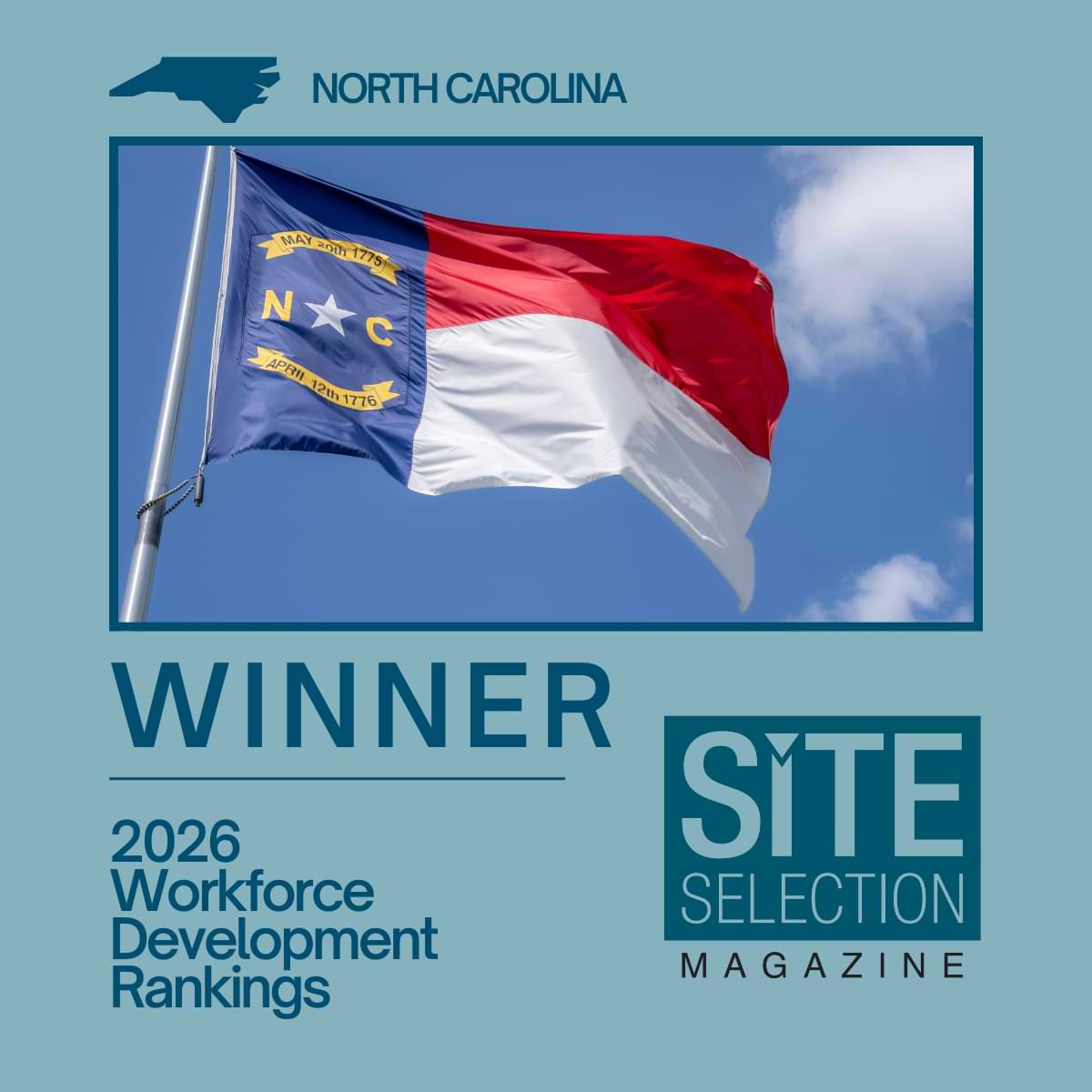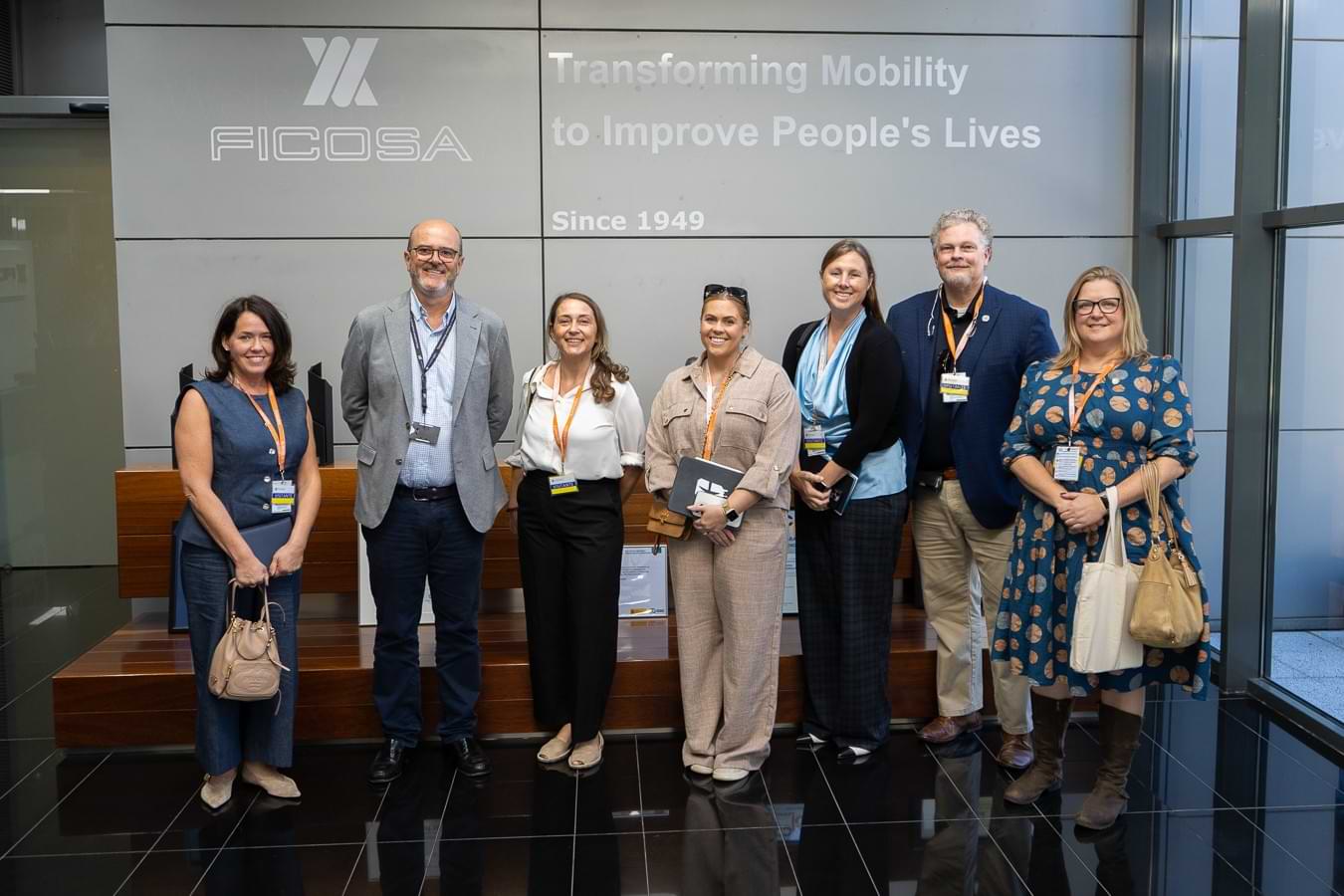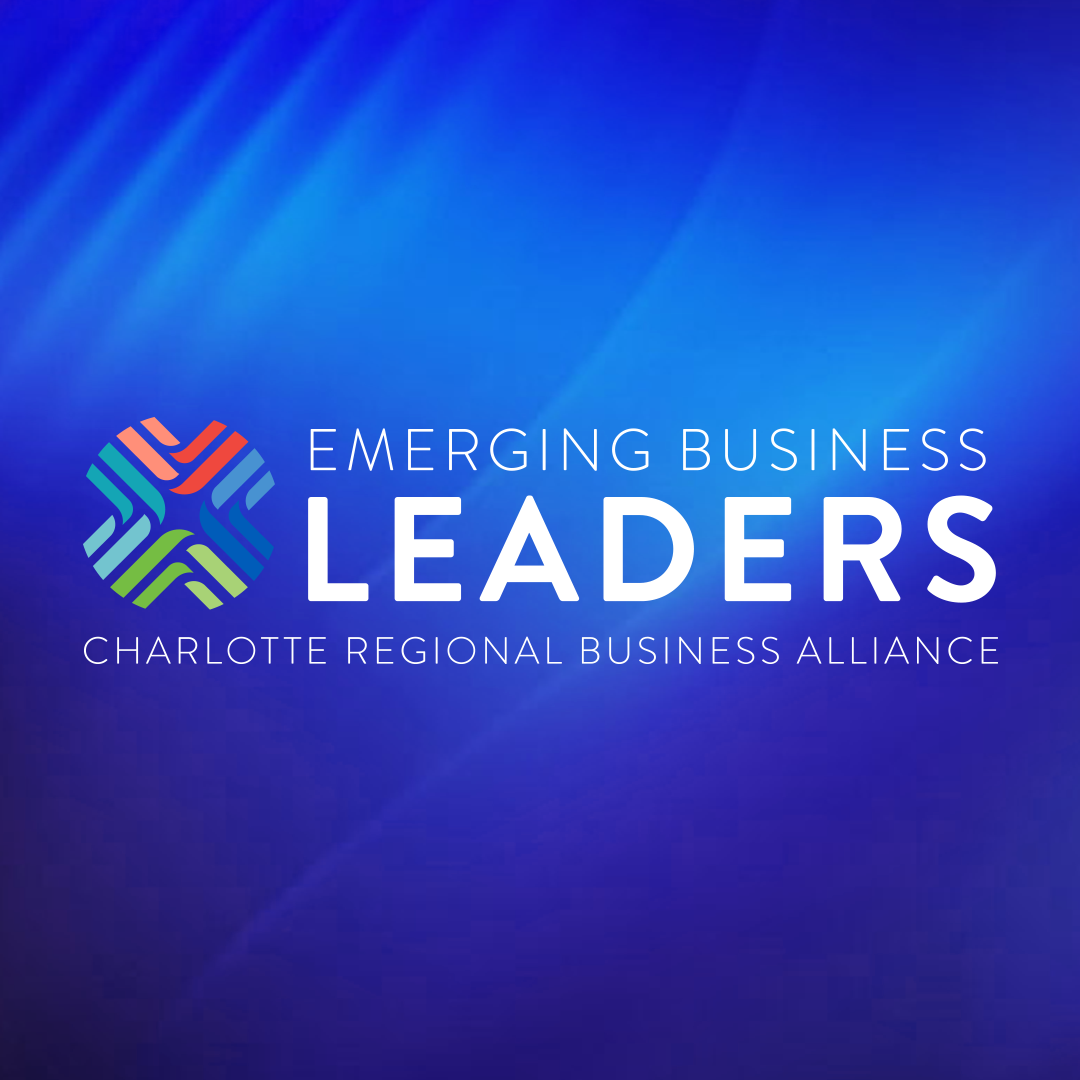Meeting future energy needs presents a “monumental challenge,” but Duke Energy President and CEO Harry Sideris is ready to rise to the occasion.
Speaking at the Charlotte Regional Business Alliance Investor Quarterly Meeting in a conversation moderated by CLT Alliance Board Chair David Longo, Sideris reflected on his career path, shared his leadership philosophy, and outlined how Duke Energy is preparing for growth.
From a classified ad to leading a power company
Sideris began his career in 1996 in a way that doesn’t happen anymore.
“I actually applied for a job through a newspaper classified ad,” he said, laughing.
He said getting into the power industry was a learning experience.
“I had no idea when I started working at that plant what it takes to keep the lights on,” Sideris said.
But one lesson became clear quickly: energy is more than a utility; it’s a community lifeline. That responsibility is only growing as the Charlotte Region welcomes an average of 157 new residents each day.
“That’s 157 apartments and new houses we need to power,” Sideris said.
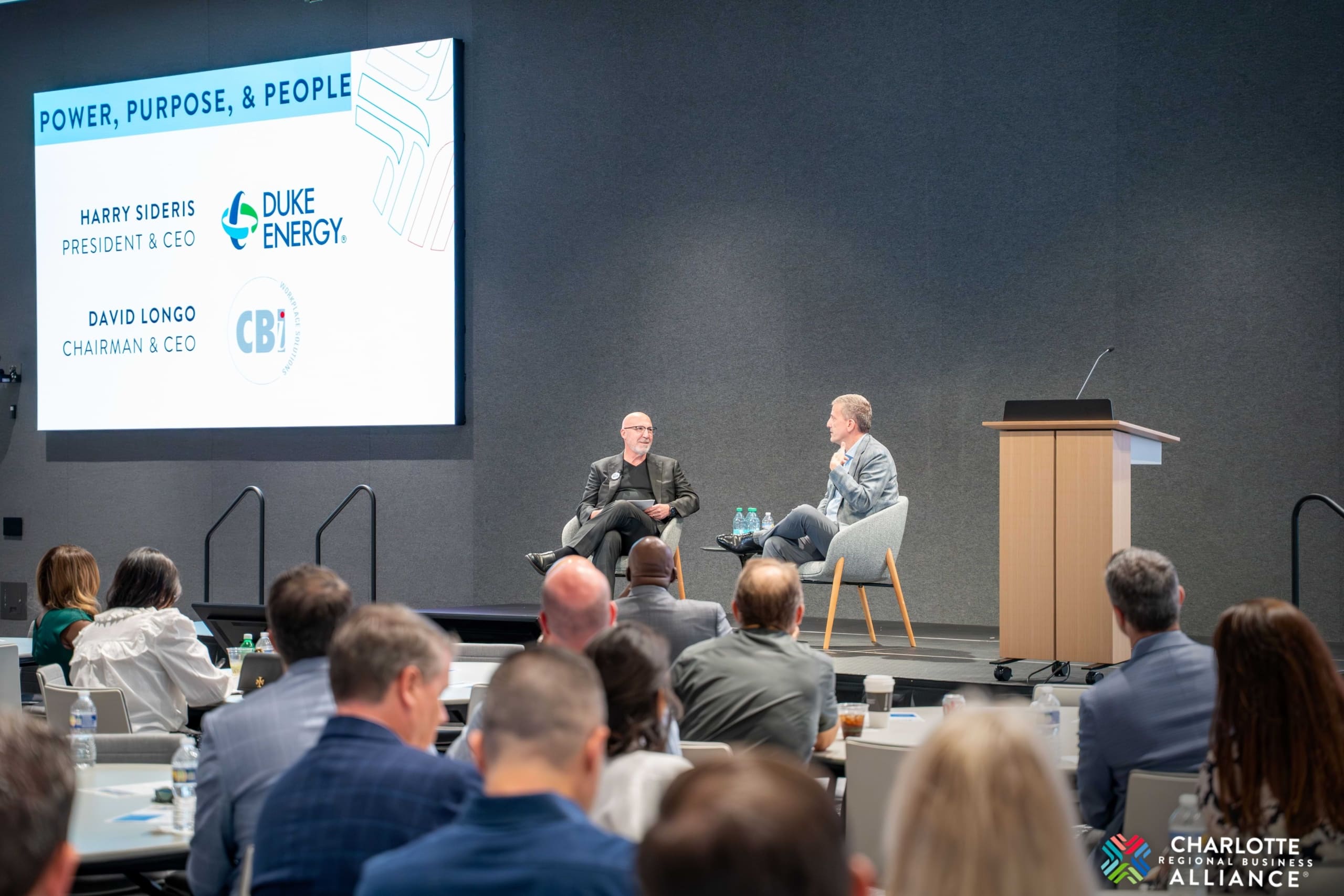
Leadership
“We often take for granted what you do, but we appreciate it,” Longo said.
He asked Sideris to share leadership principles and guidance for how he leads his organization.
“Whoever said the only constant is change… that is so true,” Sideris said.
He said it’s important to build a culture where people understand change is inevitable. But communication about those changes is key, Sideris said.
“Not just the message but connecting the dots – ‘what does this mean for me?’” he said.
Innovation
How is Duke Energy preparing to meet future energy needs for a growing population?
“It is a monumental challenge,” Sideris said.
To meet the region’s rising demand, Duke Energy plans to invest $87 billion over the next five years to modernize the grid, while keeping affordability for customers front of mind.
Innovation is part of everything Duke Energy does, and Sideris said new technologies have changed and will continue to improve the way they operate. Using meter monitoring as an example, Sideris said that before, people would write the number on their meter down and mail it in. Now, no person is involved with meter monitoring, and customers have more control and information than they’ve ever had before.
Sideris said the power grid has also modernized. If part of the grid is damaged or not working, the grid reroutes power to functioning areas.
As far as supporting future economic growth, “we’ve always been an integral part of economic development,” Sideris said.
He spoke about a recent project announcement in Richmond County, where Amazon plans to build a new $10 billion data center. He said the retail giant was looking at 40 sites across the country, but one of the reasons they chose this location is because of Duke Energy and the support they offer.
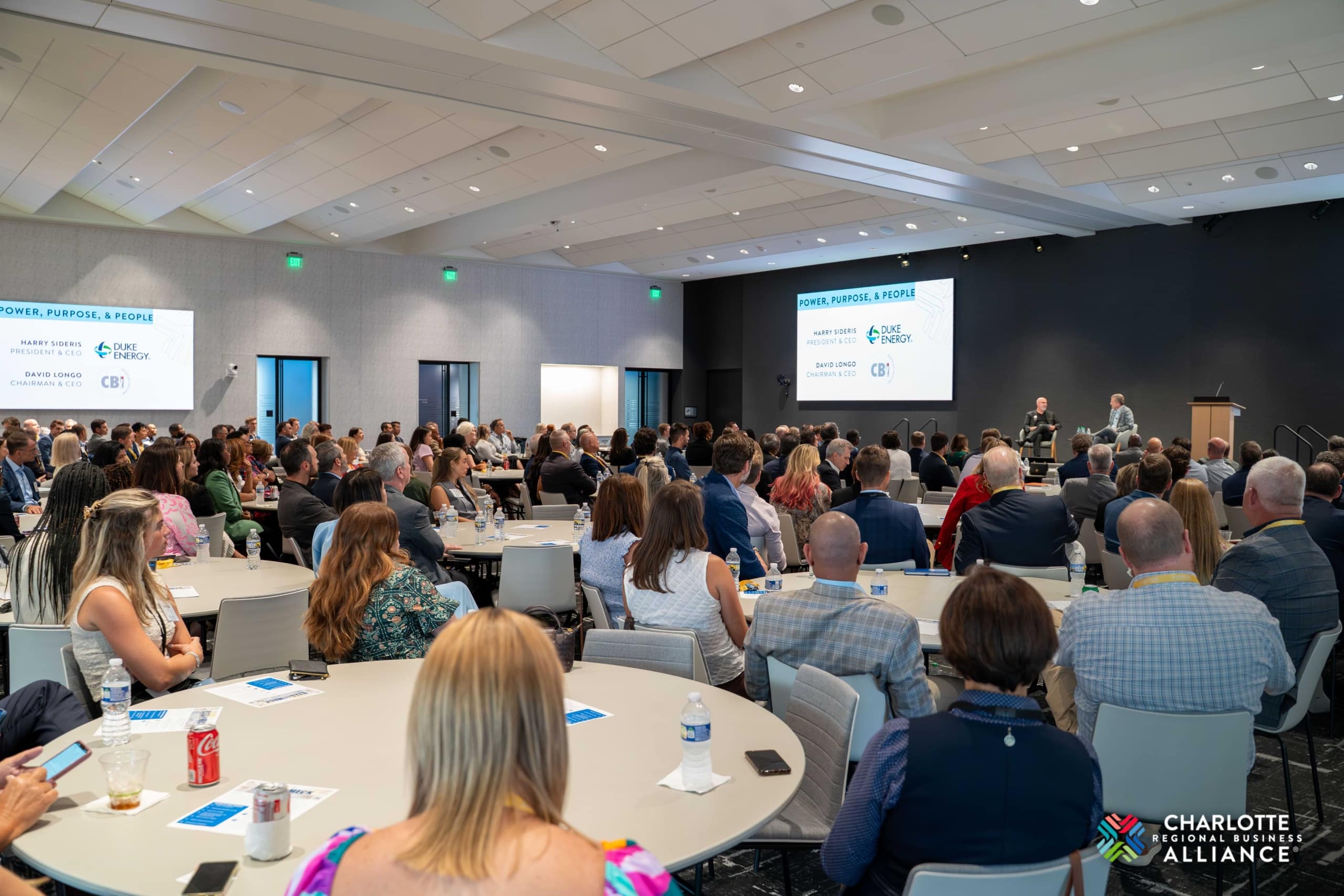
Growth, challenges, and partnerships
“Growth is a good thing, but it is also painful,” he said.
He said as demand rises, it’s vital that Duke Energy keeps working with its partners. Like the Amazon deal, he said that partnering with growing communities benefits the community itself while also spurring new local investment.
“Infrastructure comes in different sizes and flavors…” he said, later adding, “In a growing area like we have, you need all of it.”
That leads to questions like how does Duke Energy work with water and cable companies, for example, so they’re being more effective in how they can get buildings up and running? It’s not just about the power company being prepared, but they must work with local partners to make sure everyone can handle growth.
Using Charlotte’s South End neighborhood as an example, Sideris said the energy industry goes hand in hand with economic growth and transportation investments. He said the light rail’s arrival spurred investment there, and Duke now powers thousands of customers there. South End is now one of the draws for young professionals interested in Charlotte and also adds to the region’s vibrancy.
Looking ahead
“What gives you optimism about the future of this region?” Longo asked.
“I think what gives me optimism is having everyone moving here,” Sideris said, later adding, “We have great leaders today… that want to have this area grow and prosper.”
For Sideris, that combination of leadership, collaboration, and community spirit makes the monumental challenge of meeting rising energy needs an opportunity to power regional progress.

